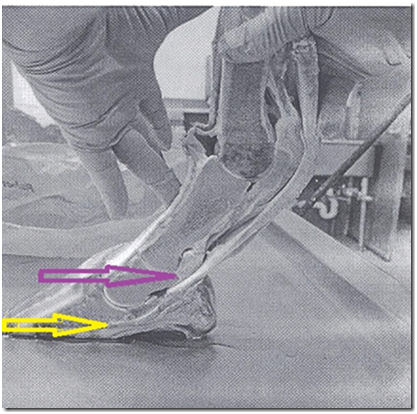"Four Cases of Navicular Syndrome” Introduction
Under the title, "Four Cases of Navicular Syndrome”, a quote of Arthur Clarke say, "The only way of discovering the limits of the possible is to venture a little way past them into the impossible.” Considering the knowledge available in 1986 when the first and successful rehabilitation from navicular syndrome was completed, the technique applied ventured a little into the impossible.
It was entirely based on veterinary researches but the findings were pertinent and novel. Today, advanced research studies fully corroborate the principles presented in this document. However, even if immensely effective, the technique remains largely unknown because it shakeups conventional thinking. Even if progresses have been made in the matter; the general consensus remains influenced by the thought that back problems are only compensation for hock pain or other musculoskeletal disorders. At the contrary, in each case, we have corrected the limb kinematics abnormality causing the development of navicualr syndrome addressing the vertebral column dysfunction that engendered the limb kinematics abnormality.
The author of the scientific discovery that has permit these successful rehabilitations wrote, "The disease is therefore, considered to be reversible” (Ostblom, 1982). However, the journey is difficult and demands equitation and a work in hand resolutely more elaborated than the principles commonly emphasized. If you feel that your horse's soundness merits venturing in a better world. This video is for you.















19.08.24
03.04.22
03.04.22
13.10.19
07.12.18
07.12.18
04.04.15
04.10.12
14.05.11
14.05.11